This is a bit of a long-ish post, so maybe settle in with a snack, and if the post gets cut off you can click the read entire message link. If you get something good from my writing, please share it, and let me know what you think. Thanks for being here.
I’m a bean to bar maker and my head hurts, for a reason I jokingly call pain au chocolate.
I’m actually writing this post to save my head from hurting, to save myself from beating my head into the wall of asking the same question, over and over again:
Why do chefs and cookbook authors and food writers and people who love and know food, lump all chocolate together by calling it (just) chocolate?
When I was growing up lettuce meant iceberg. Not even romaine. There was no such thing as red leaf or spring mix in a box. Definitely no speckled trout with it’s red spots on tender green leaves. A potato meant Irish potato; that’s what my mom and grandma, all my aunts, called them. No Yukon golds. Not even a hint of a German buttreball or Ozette. An apple? They came in two choices: red delicious or a yellow delicious. No Granny Smiths. No Fuji, Braeburn, Sweet Bee, Honeycrisp, or Arkansas Black.
So I understand, because I’ve lived it, that we know what we know, which in truth is we know what we’re sold and fed. But things change. When I want to bake a pie, I can now choose from an array of apples—even at my local big box store—and my choice can be made depending on what I like, can afford, and what I prefer for baking pie vs eating out of hand.
With every cookbook I schlepp home, and as a cookbook fan I do a lot of schlepping from the local library, the first thing I do is flip to the index to the c’s, to see if and how chocolate is listed. In the 578-page cookbook mammoth I opened today, one I’ve long awaited to get my hands on described as “a one-stop culinary school in a book,” there were a bunch of recipes under chocolate (yes to Future Brownies) and this entry, which made my heart tremble:
common cocoa/cacao products, 372-3
But first, those brownies. They are gluten free and use rice flour; the ingredient list calls for “125 grams glutinous sweet rice flour, preferably Koda Farms Blue Star Mochiko.”
I don’t know anything about the differences in rice flours, but this level of specificity thrills me. Says, the writer pointed it out because it made a difference to them, and they want me to experience that difference too.
It’s why I look forward to the Rancho Gordo newsletter: there are beans, there are old southern beans my sister grows that I dream of all year long (they’re called greasy beans), there are store bought beans, and there’s a whole other world of dried beans I would have never known existed, if not for Rancho Gordo and their love of beans.
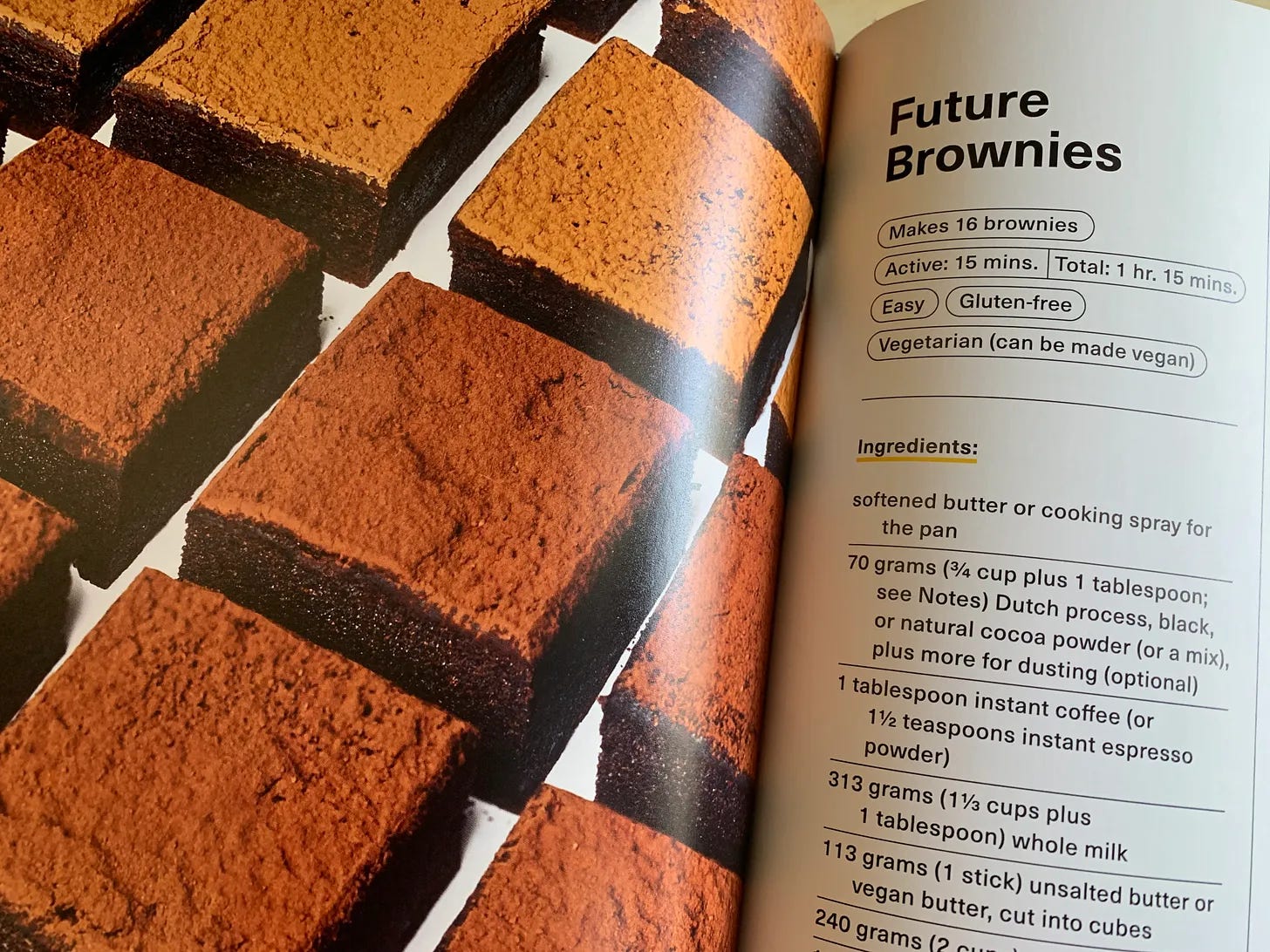
On page 372, my heart throb common cocoa/cacao products, I found a left sidebar title: What Is Chocolate?
As a bean to bar maker I am immediately interested and simultaneously stressed any time a food writer or test kitchen influencer talks about chocolate, wondering will they get it right?
I skimmed the standard “chocolate comes from a tree” intro bits, then stopped (okay, screeched to a halt, cacao dust flying in my wake) at what I read next.
These fleshy seeds are fermented, dried, roasted, and husked to become cocoa nibs. Fermentation and roasting is what gives chocolate it’s distinct earthy and savory flavor. These nibs are then processed in stone grinders for hours until they become a warm and fluid mass called cocoa liquor…If you leave this to cool, you’ll end up with unsweetened chocolate.
Cocoa liquor is further processed by divvying it up into its two core components: cocoa solids and cocoa butter. Cocoa solids and cocoa butter are then recombined along with various ratios of sugar, vanilla, and other additions (like milk solids of lecithin) to become the chocolate bars, disks, and chips we use for baking and snacking.
If it wasn’t a library book I’d have grabbed my favorite magenta sharpie. Here are my translations.
“These fleshy seeds are fermented, dried” is correct, but from there it’s incorrectly implied that the next steps—roasted and husked—routinely/always also happen at origin.
Roasting is THE most important step in the hands of a chocolate maker in the bean to bar process: it’s the predominant reason why “not all craft chocolate tastes the same” even when makers work with the same origins. The beans we order arrive raw; we choose the equipment we’ll use to roast (drum roaster or convection oven), the approach to roasting (profile or time + temperature) and then, we roast.
Also, husking (removing the shells with a winnower) happens after the roasted beans are cracked (with a cracker). That photo back up at the top? that’s me admiring cocoa nibs after I roasted, cracked, and winnowed them.
“Fermentation and roasting is what gives chocolate it’s distinct earthy and savory flavor.” Yes, but. And this is a biggee: not all origins taste earthy and/or savory. Some come out of the ferment boxes/heaps and after drying will offer fruity, bright notes after the maker roasts them. Others taste floral, while others may taste nutty. A fruity origin or a floral origin or a nutty origin won’t taste earthy/savory no matter how we roast it: the same way a tart Granny Smith apple won’t taste like a Fuji or Honeycrisp.
The statement is irksome because it is akin to saying baking is what gives bread dough a bread flavor, as if there is “just bread,” no matter what flour is used.
“These nibs are then processed in stone grinders for hours until they become a warm and fluid mass called cocoa liquor…” This is true of the majority of craft chocolate, but hilariously not true of most industrial or factory chocolate, which use various milling equipment (ball mills and roller mills). I say hilariously because up until this statement the cookbook has been describing industrial chocolate processes, which are, by definition, not what small batch chocolate makers use.
But then we do go straight back to industrial, and by industrial think Hershey’s and Valrhona and Mondelez, and the world’s other biggest chocolate manufacturers, “Cocoa liquor is further processed by divvying it up into its two core components: cocoa solids and cocoa butter.”
Oh my head.
There are two sides of the chocolate coin: one side is big, the other, in comparison, is microscopic. Think, megalithic bread factory spewing out Wonder Bread and then picture your neighborhood baker with a wood-fired oven. They both produce bread, possibly use some of the same type of ingredients, but the results are very different. Yep, both are bread, but.
It’s the intentions behind these two approaches that make them different.
Industrial chocolate does weird ultra-processing things to what started out as a pod on a cacao tree. Each pod is whacked off the trunk by a human hand holding a machete, and then the seeds and pulp (it’s called baba at this stage) are scooped out of the pods and hauled to the fermentation heaps. So yes, the mega chocolate producers can and do separate (“divvy up”) the beans, but they don’t do it because that is how chocolate is made.
They do it because cocoa butter is a more lucrative product than the chocolate is for them; namely because it is used primarily by the cosmetics and pharmaceuticals and pastry industries who pay a lot for it. The big chocolate producers remove it and then add other less-expensive oils and fillers, like palm oil, in its place.
In bean to bar craft chocolate we take the nibs (broken up cocoa beans without their shells) and use them in their beautiful, flavor-forward, 50% cocoa fat, entirety. This is one reason why craft chocolate is more expensive; not the only reason, but one.
Is chocolate good for migraines? I hope so, because my head cracked in two (if you picture a split-open cocoa pod that’s okay) at this final, sadly clueless bit:
“Cocoa solids and cocoa butter are then recombined along with various ratios of sugar, vanilla, and other additions (like milk solids or lecithin) to become the chocolate bars, disks, and chips we use for baking and snacking.”
Of course they do. Never mind glossing a wee bit over the “other additions,” and no mention of just what is meant by various ratios. On the face of it, wouldn’t ya wonder why someone would go to the trouble of divvying up the nibs into their two main parts (cocoa powder and cocoa butter) only to then recombine them?
For me this statement does two things. It sums up how someone (and many of these someones) who is a renowned, respected, talented, chef or baker or food influencer doesn’t yet seem to be aware that anything other than industrial chocolate exists, much less that it exists to offer exactly what industrial chocolate does not: a truer rendition of the flavors of cacao. And, it reinforces the prevailing, sadly uniformed notion that chocolate is just chocolate.
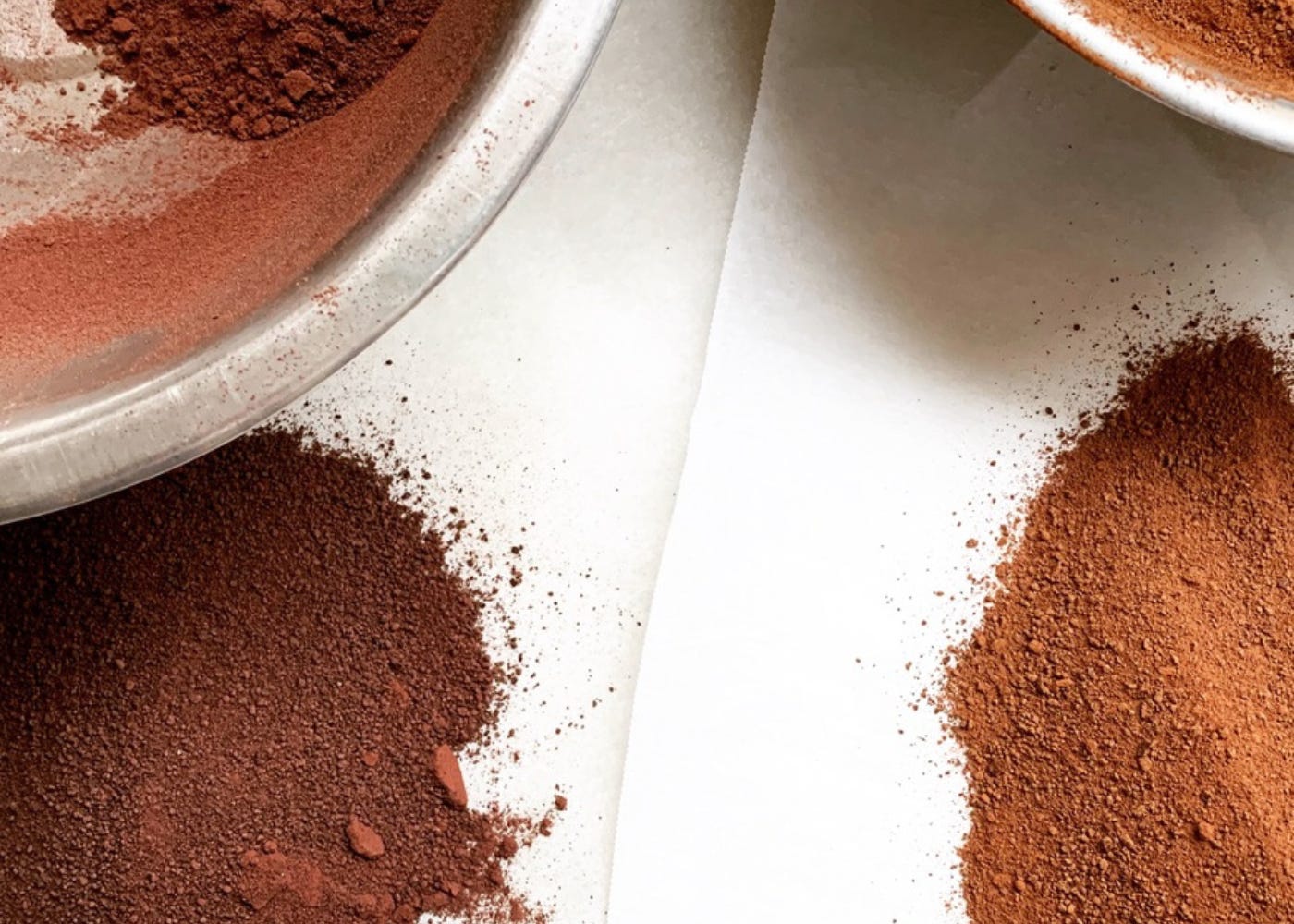
Think that’s all? Nope. If you need a snack, same. Maybe a quick break to clear our head too. But I hope you’ll come back, and hear me out.
On cocoa nibs:
“Depending on the brand, where the cacao was harvested, and how much the nibs are roasted, they can vary greatly in flavor and texture.”
I’ve been crafting chocolate since 2014, and from 2014-2019 worked for a large, well-known cacao supplier/importer. I have never heard of cacao referred to as a brand. Do they mean origin? surely? Because “where harvested” refers to origin.
As a rule of thumb that has only come to light through the advent of craft chocolate, the more information provided about “where the cocoa used to make the chocolate comes from,” i.e., its origin, the more we know about how the cocoa was grown and produced, and what flavors we can expect to find in the chocolate made using it.
Roasting nibs: again, an industrial process that differs from roasting whole cocoa beans. Now I began to wonder if this was written by AI.
On cocoa butter:
Cocoa butter’s unique texture makes it solid at room temperature…
Chemists worldwide who work with fats now also have headaches. It’s not the texture that makes cocoa fat solid, it’s the chemical composition of cocoa fat that makes it a solid at room temperature. When solid, the texture is firm, even rock-hard if it’s cool. When melted, the texture is liquid. Either way, either texture, it’s still cocoa butter.
Oh welp. On milk chocolate:
“But there are some amazing producers out there making milk chocolate with as much as 42% cacao.”
With as much? Them’s fighting words. I really would love to send the author my Nightswimming milk chocolate bar (60%) or my Meteor Shower black sesame milk chocolate (65%). I am not alone in crafting dark(er) milk chocolate. Or maybe I’ll take the rest of the day off to lick my bean to bar slow batch wounds and eat my bars myself.
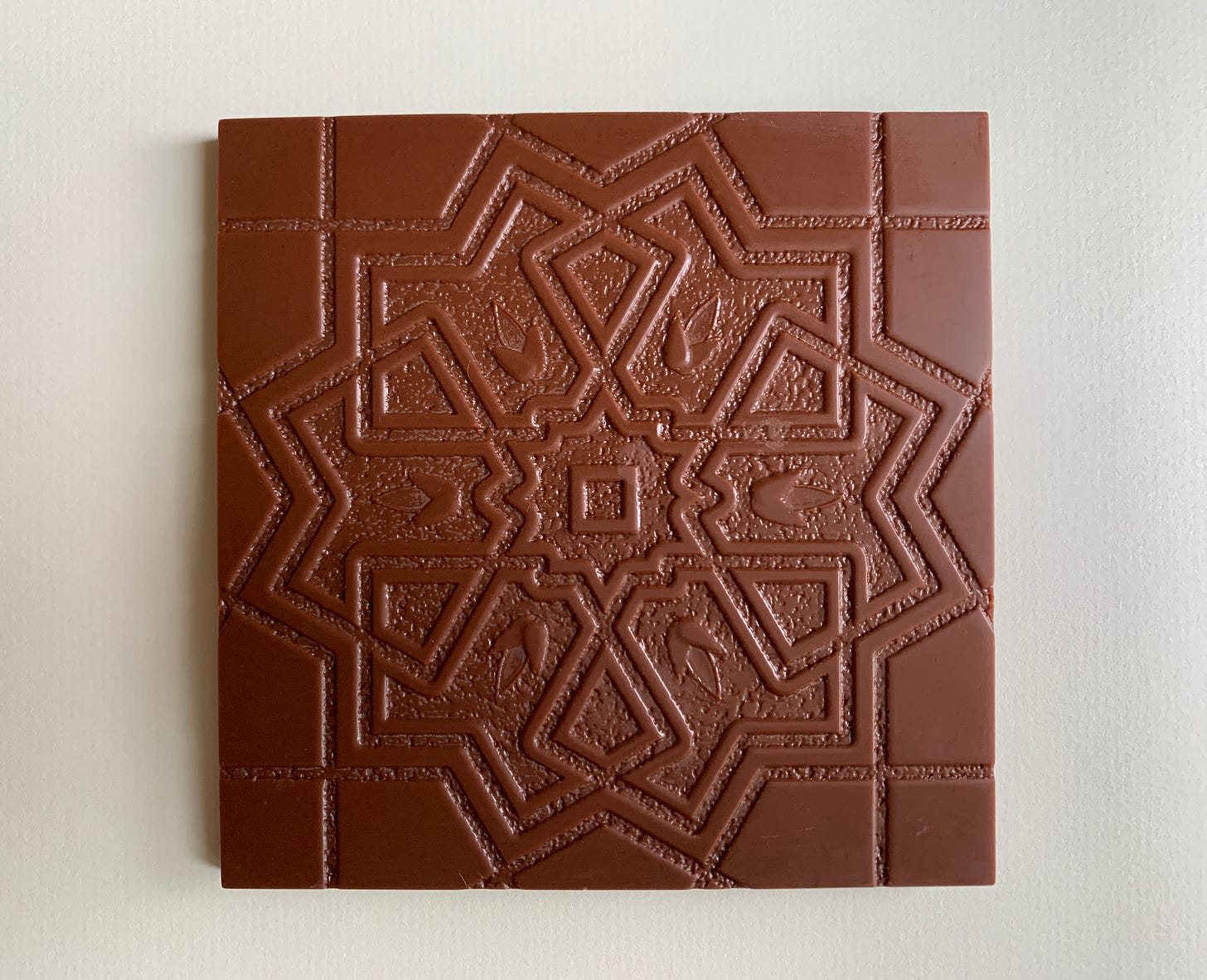
Look, I’m just a very tiny, very slow batch maker. But, given how much the tiny, slow batch chocolate community has shaken things up for the Goliath big-batch industrial chocolate world, I feel, if not credit, an understanding of craft chocolate is overdue.
Here’s what I mean by shaking up: there are now oat milk Reese’s peanut butter cups (the first oat milk chocolate came from small batch craft chocolate makers), a bunch of ex-Hershey’s engineers bought Scharffen Berger, the OG bean to bar craft chocolate maker (which recently was sold to flowers.com), and big chocolate has started putting cacao pods on their wrappers 😂 and sometimes, even %s.
Chocolate is not just a thing, or one thing. Any chef or cook (or anyone who’s watched The Bear) knows there is not just “lettuce” or “tomatoes” or “flour,” no thing as “just wine.” This is true for chocolate. It’s just that few food writers and cookbook authors seem to fully understand this yet.
With all due respect, saying you’re a chef but you don’t know or note which origin the chocolate is in the dessert you’re serving or for the recipe in your book, is like saying you’re a chef and handing me a menu where the starter is “cheese” the entree is “meat” and the side is “vegetable” and each course is accompanied by “wine.”
The nibs in the photo up top started their life as cocoa pods in Vietnam (Tien Giang region) and the chocolate made with them tastes nothing like the chocolate made with the Vietnam Ben Trè origin or the Vietnam Dak Lak origin or Vietnam Lam Dong. These nibs don’t make chocolate with the same flavor created by the nibs I roast and crack and winnow using Huila, Colombia cacao or Toledo District Belize cacao, or any other cacao.
They express their unique translation of cacao the way a Cox’s Orange Pippin apple says “I’m an apple, and here’s my story of being an apple.”
Which, in the hands of the chocolate maker, becomes my story. And then when I hand my chocolate to a chef, or baker, becomes their story.
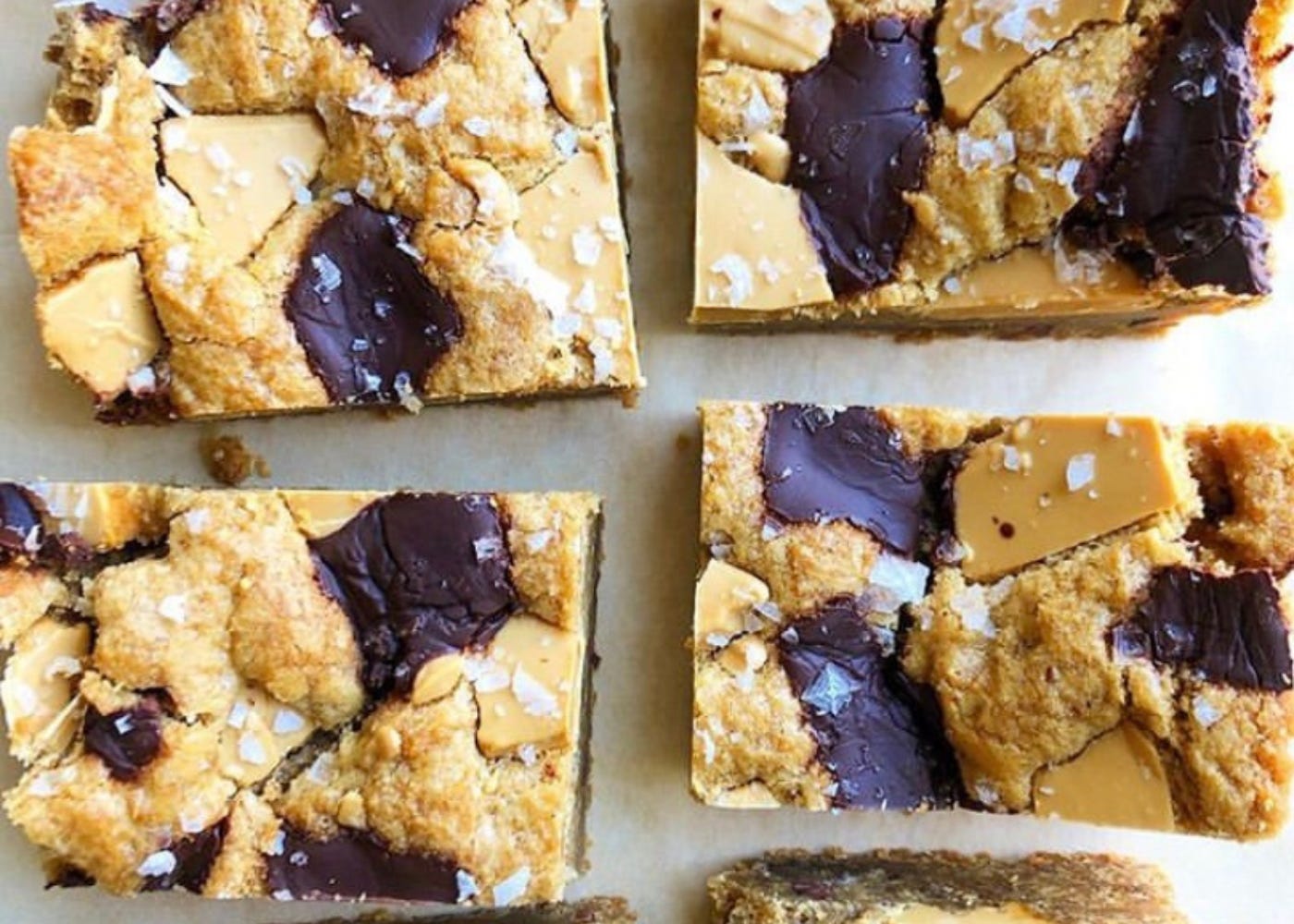
It’s 2025, the “craft chocolate revolution” that was supposed to highlight origin flavor diversity has been in plain view since the 1990’s, yet industrial chocolate is still waving it’s big shtick. I like to think of it as a wand they use to cast a spell that dulls our perception, flavor and otherwise. Or is it a dangled carrot of low pricing? I’m not blaming you.
If you’re a chef or pastry chef or baker, or cookbook author, I understand why you still reach for Big Chocolate, the Guittard, Valrhona or Callebaut. Maybe Scharffen Berger. Maybe, Theo. These are all easy to source, and some offer special deals to pastry chefs. Food media like Food and Wine or Bon Appetit haven’t exactly helped, but they’re probably not to blame, either. Oh, wait. Yes they are.
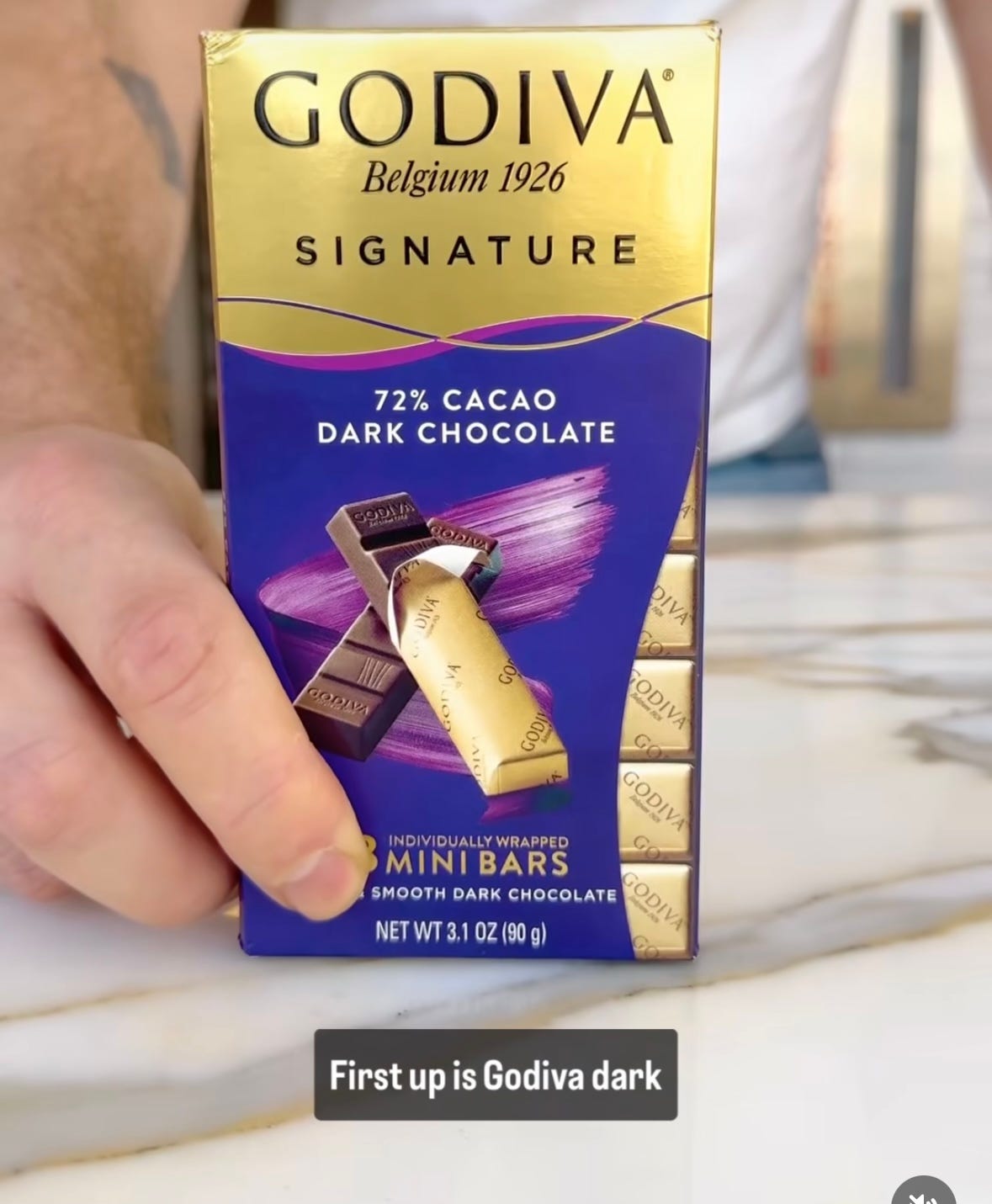
Before (and by before I mean the day of) I stared at a bag of cocoa beans and said I’m going to be a chocolate maker, I was big time into Hershey’s Kisses. By the bagful, mind you. To this day I see those foil-wrapped peaks and swerve on auto-pilot toward the shelf before I catch myself. The ones that look like Santa hats? kiss jonesing hell. So what I’m saying is, I didn’t come to making bean to bar because of some love of fine or fancy chocolate.
I didn’t even know craft chocolate existed when I made my first batch.
So what’s the problem? It’s one thing to say every origin has its own unique flavor personality. Sure, that sounds good, though it helps to know the difference each origin brings to the table. The first time I stood in front of a wall of craft chocolate bars my eyes were Madagascar 70%-ed to the point of dizzyness: what flavor is a Madagascar if I’ve never tasted it or had it explained to me? A wall of craft bars is about as helpful as a wine flight we can only look at, but not taste.
Understanding requires experiencing.
Food, all food, comes with questions, and those questions arise each time we take a bite of something new or familiar. Do I want to taste bright tangy pomegranate, or toasty malty florals? Nutty with tannins? Earthy? But it’s something else besides flavor that answers the questions; and here’s where it gets sticky, to say that origin is about the flavor and not also acknowledge it’s about the farmer, and the very first page of a story that’s long had key pages missing.
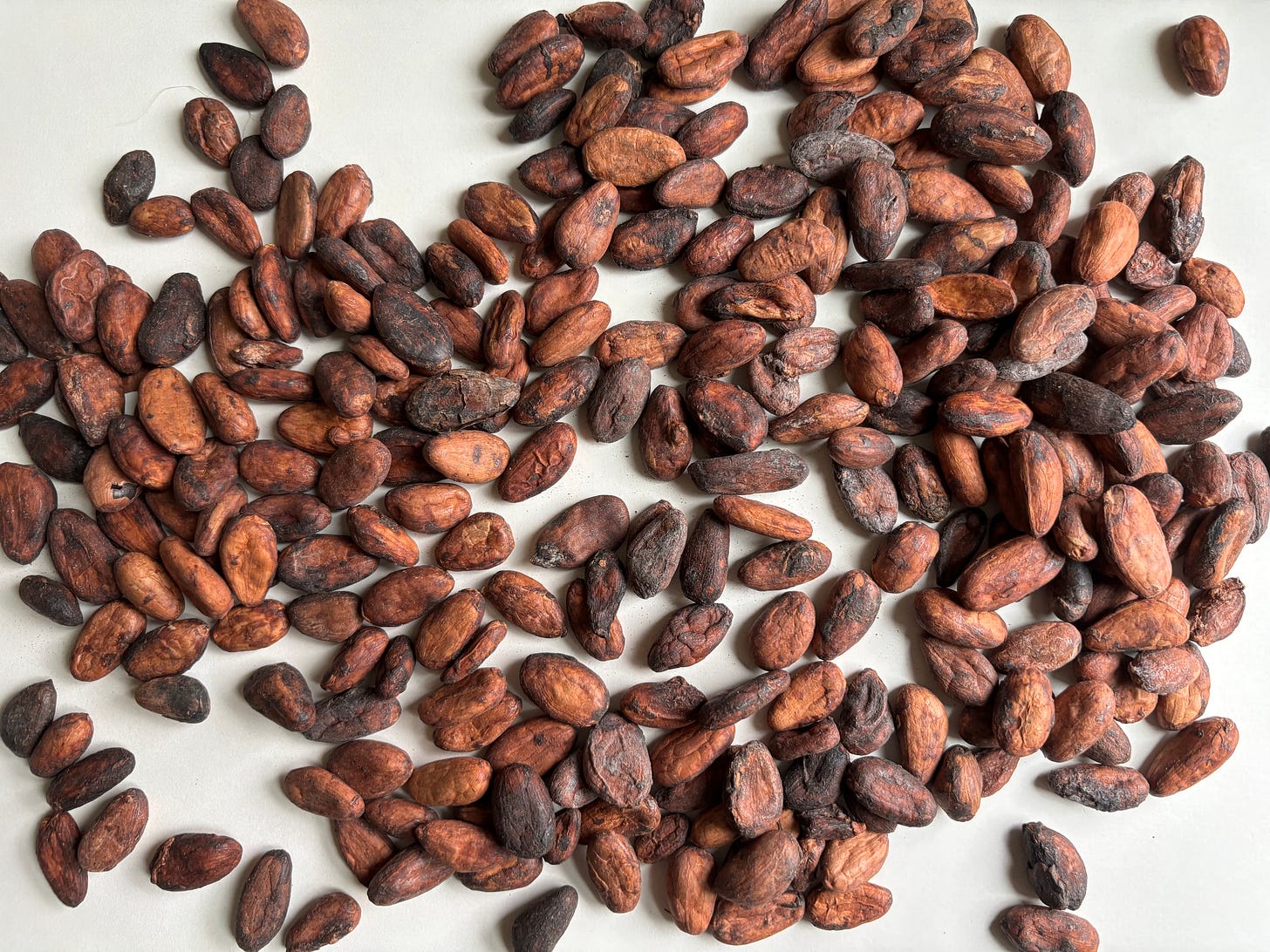
You and I don’t need a chocolate historian to tell us that colonialism is why I can source cacao from Vietnam or Fiji or Ghana: places where it didn’t grow until it was introduced there, and the purposes for why it was introduced, and the methods used for those purposes. All that seems like a long time ago from the here and now of KitKats in the plastic Halloween pumpkin or those seriously wild chocolate creations on a Netflix special, or a lauded cookbook with “chocolate” listed as an ingredient.
I just want you to think about bread.
The loaves hurtling down some conveyor belt before gliding into plastic bags that end up in Trader Joe’s or Kroger or your neighborhood bodega, if they sell commercial bread: some might be labled sourdough or artisan or rustic, but they were made in big tanks in a factory and by design, intended to be as uniform as possible. Think about that bread hauled out of a wood-fired oven on a peel by a baker who, on a good day, turns out enough loaves to fill their shelves and then is sold out, and how that baker tended their starter and proofed the loaves and shaped them by hand.
If those images don’t offer enough contrast, think of a really great restaurant where you’d give your left hazelnut to get a table, vs McDonald’s. One offers one thing, the other, another version of the thing.
What we’re choosing isn’t the food, it’s the intention behind what’s being offered to us.
I’m not saying we can’t enjoy both sides of the coin, I’m just hoping one day more people will recognize there are two sides of the chocolate coin, too. By people I mean chefs and bakers and oh, let’s be the wildchild we were when we stared at that first bag of cocoa beans and fell in love with them, food writers, cookbook authors, their agents, and their readers.
Is it too much to want to haul home 578 pages from one of my favorite culinary creators, and read, not “100 grams dark chocolate" but something like this?
Ingredients:
100 grams 72% Kokoa Kamili Tanzania dark chocolate roughly chopped, plus more for garnish
Anyhoo, just asking.
Thank you for reading, and please feel free to share your thoughts.









They just want to move books. Chocolate is just a chapter to them. Tick, now onto avocadoes. I know, I'll get the intern to google them. The end.